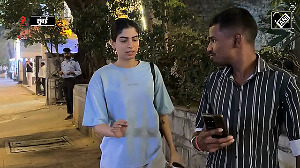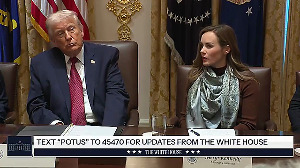The sentiments of the ignorant are what politicians unfortunately fan to inflame passions for political gain, says Murad Ali Baig

The Rashtriya Swayamsevak Sangh, Bharatiya Janata Party and other opponents of cow slaughter need to read the 19th Livestock Census of India, 2012, to be reassured that India's cows and other female bovines are not in any grave danger.
The census shows that their numbers increased by 7.16 per cent to 216 million since 2007.
It is the males of the species that are threatened, as their numbers declined by 18.6 per cent to 84 million in the same period.
As male bovines today account for just 30 per cent of the cattle population, it clearly shows that it is the bulls and not cows that are being butchered.
Strong religious sentiments may encourage the ban on cattle slaughter in Maharashtra, Kerala, Haryana and other Indian states but India's legislators need to know the hard facts about India's livestock before they allow their emotions to overrule common sense.
Cattle are a huge economic factor in all rural areas, and legislators need to understand the economic impact of their sentiments or prepare to face a very hard economic and political backlash.
The census shows a strange paradox that two-thirds of India's cattle are female.
This is because males are most valuable as draught animals or for meat and hide, and that their value is declining.
It is also significant that it is the male animals (or birds) that are mostly used for meat, as the females are more valuable as breeders and for milk or eggs. If males are not used for ploughing or transport, they are only useful for their meat or hide.
This gender imbalance is increasing rapidly and a recent report from the Central Institute of Agricultural Engineering, Bhopal, shows that the share of draught animals for farm power on Indian farms declined from 44 per cent in 1971-72 to just 4 per cent in 2012-13, with larger roles for tractors and electric and diesel pumps.
The livestock census clearly shows that millions of males have been culled. The census data also show that male buffaloes declined 17.8 per cent to 16 million, while females increased 7.99 per cent to 92 million.
There are, therefore, nearly six female buffaloes to every male.
It is only in the states where beef is being eaten that this imbalance is less pronounced.
If legislation cuts into meat consumption, it will seriously injure rural incomes regardless of religions.
Paradoxically, the keepers of India's cattle themselves perpetuate the worst crimes against cattle. Every year, several million pregnant cows and buffaloes are brought into Indian cities to provide fresh milk.
As half the calves they deliver are males that are an economic liability, they are callously killed as soon as the milking steadies. They are not humanely slaughtered by a stun gun or by beheading but are callously tied in the sun to slowly die of dehydration and hunger.
This data clearly show that even in the most orthodox areas, nearly half the calves are either killed or are encouraged to die.
The state-wise facts clearly show that cattle slaughter is very widespread and that economic compulsions far outweigh religious sentiment in almost every urban and rural area.
India today has 299 million cattle that need roughly 30 million hectares for their grazing as well as an equal amount of additional land for their fodder requirements.
This is a huge chunk out of India's 190 million hectares of cropped land. If states legislate against beef consumption it will add many more unproductive cattle demanding land that is already scarce.
Few are aware that India today has roughly 80 million old and unproductive cattle that are callously driven away until they die of hunger or illness.
They do not harmlessly forage on barren land but, driven by hunger, raid productive farms and face the anger of farmers who mercilessly beat and even kill them. These useless cattle are a huge economic liability that takes food and economic opportunities away from millions of needy people.
There is no Hindu scripture opposed to the eating of meat or even beef.
In fact, Indra, the supreme Vedic God, was specifically offered the best sides of beef.
The Vedas, Mahabharata, Ramayana, Shastras and other ancient texts all endorse eating meat, and beef was even specified as the daan, or offering, reserved for Brahmins.
The sentiment against beef was essentially political since it was commonly eaten by Muslims.
Cow protection, therefore, became a religious statement when the first movement to protect the cow was started by the Sikh Kuka (Namdhari) sect in 1870.
In 1882, Dayananda Saraswati founded the Gorakshini Sabha that challenged beef eating, provoking a series of communal riots in the 1880s and 1890s.
These led to further communal clashes where many were killed in Azamgarh in 1893, Ayodhya in 1912 and Shahabad in 1917. Thus, eating beef moved from being just a matter of diet to becoming a defining icon of Hindu versus Muslim identity.
Though most Hindus may not want to eat beef, cattle breeders have long subordinated their religious sentiments to their economic compulsions.
The sentiments of the ignorant are what politicians unfortunately fan to inflame passions for political gain. But they as well as India's officials, and intellectuals need to consider the loss of farm income and the high cost of useless cattle before rushing into legislation.











